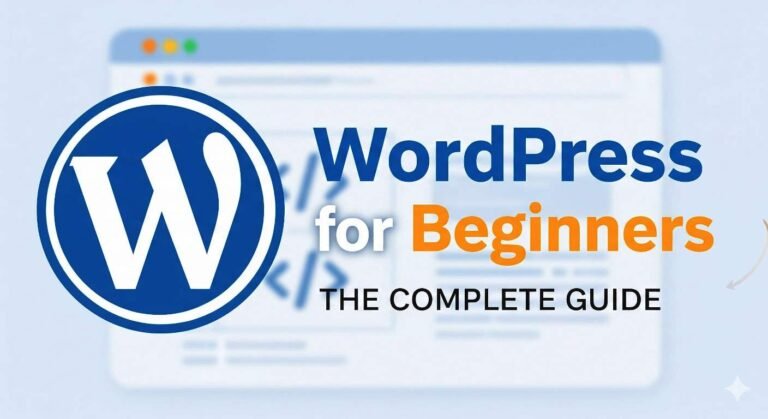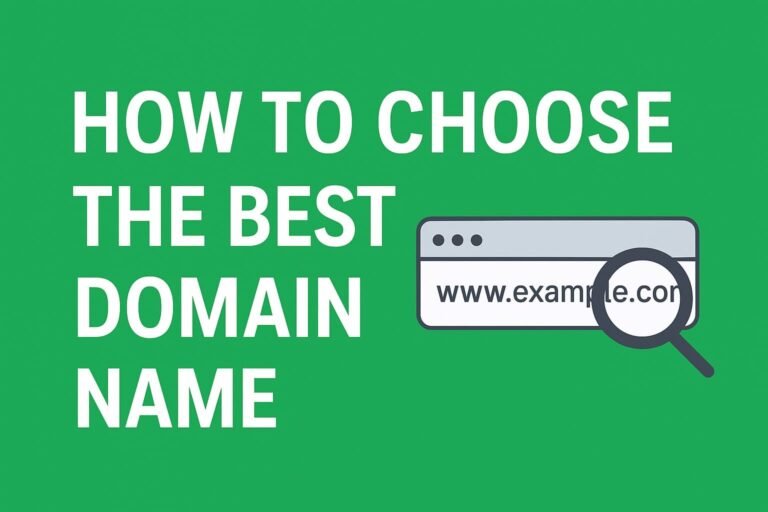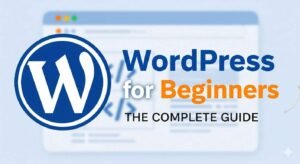What is WordPress?
If you’ve ever thought about creating a website or a blog, you’ve probably come across the term WordPress. It’s one of the most popular tools for building websites today. But what exactly is WordPress? How does it work? And why do millions of people choose it for their websites?
In this complete guide, we will explain everything you need to know about WordPress in a beginner-friendly way.
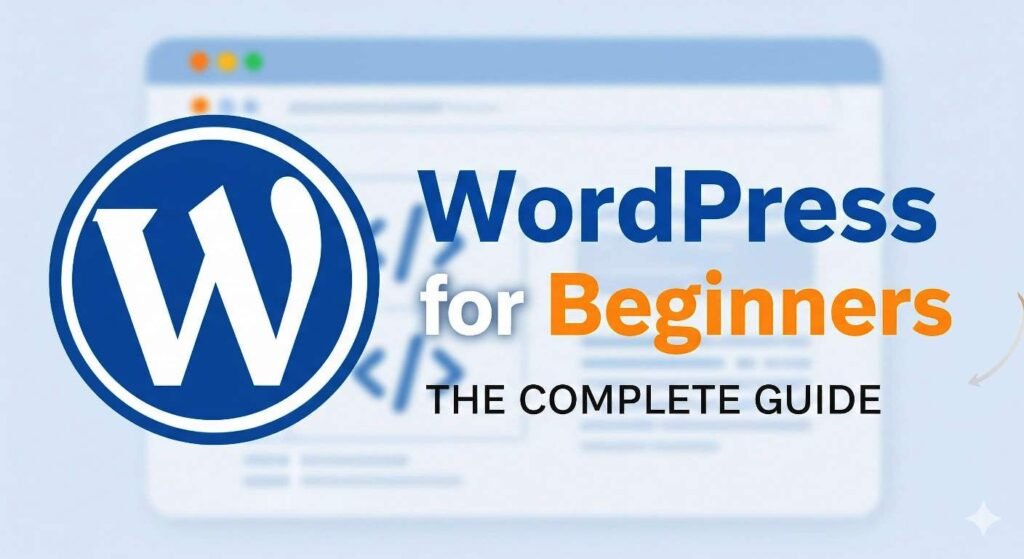
1. What is WordPress?
WordPress is a Content Management System (CMS) that helps you create, manage, and publish websites without needing to know how to code. It is open-source software, which means it’s free to use and can be customized by anyone.
Originally launched in 2003 as a blogging platform, WordPress has grown into a powerful tool for creating all types of websites, including:
- Blogs
- Business websites
- E-commerce stores
- Portfolios
- Membership sites
- Forums and more
Today, WordPress powers more than 43% of all websites on the internet, making it the most widely used CMS in the world.
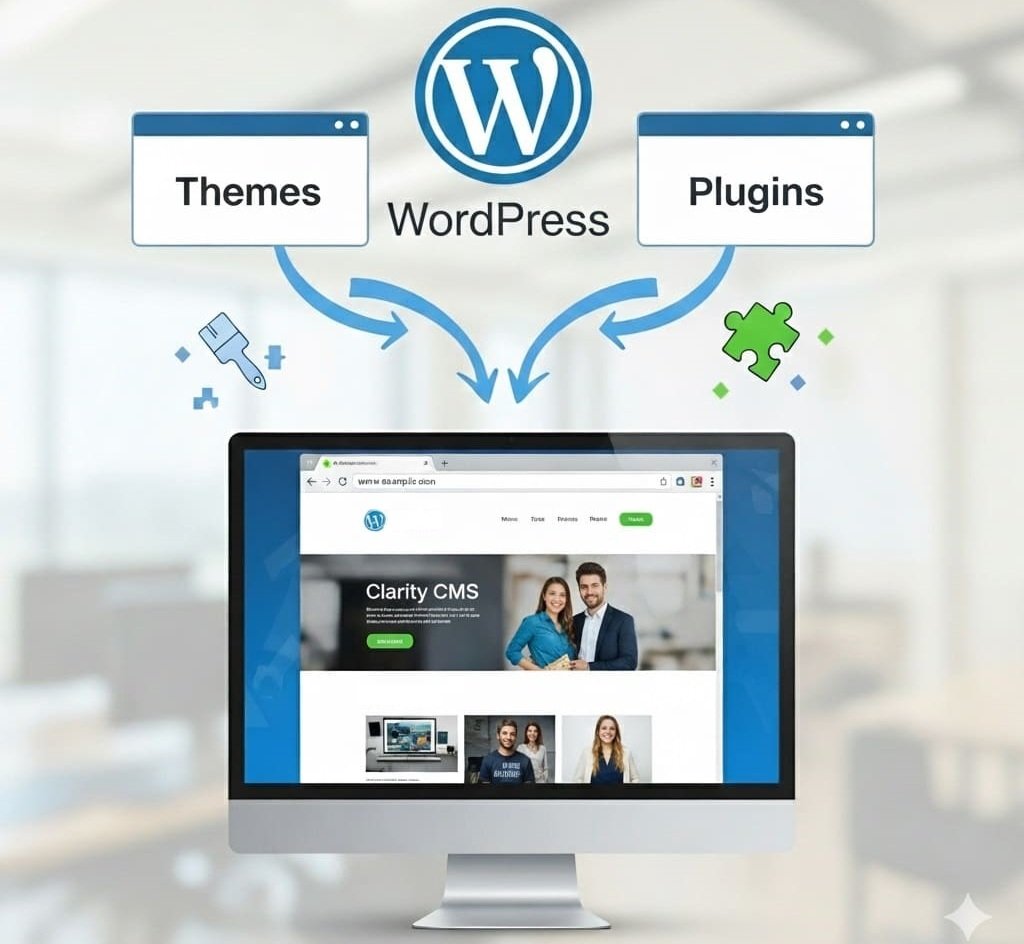
2. Why is WordPress So Popular?
There are many reasons why WordPress is the first choice for beginners and professionals:
a) Free and Open Source
WordPress is completely free to download and use. You only need to pay for a domain name and web hosting.
b) Beginner-Friendly
No coding knowledge is required. You can easily create pages, posts, and media using a simple dashboard.
c) Highly Flexible
With thousands of themes (for design) and plugins (for functionality), you can build any type of website.
d) SEO Friendly
WordPress makes it easy to optimize your site for search engines, which helps in getting more visitors.
e) Large Community Support
Millions of users, developers, and designers contribute to WordPress, so you’ll find tutorials, forums, and help everywhere.
3. WordPress.org vs WordPress.com – What’s the Difference?
People often get confused between WordPress.org and WordPress.com. Here’s the difference:
WordPress.org (Self-Hosted)
- You download WordPress software and install it on your own hosting server.
- Complete control over your website.
- Free to use but you need to buy hosting and a domain name.
- Ideal for businesses and professionals.
WordPress.com (Hosted Service)
- WordPress.com hosts your site for you.
- Easier to use but has limitations on customization.
- Free plan available, but for extra features, you need to pay.
- Good for beginners who just want a simple blog.
| Features | WordPress.org | WordPress.com |
| Control | Full control over your website. | Limited control. |
| Cost | Free software, but you pay for hosting and a domain. | Free plan with limitations; paid plans for more features. |
| Flexibility | Highly flexible with access to thousands of themes and plugins. | Less flexible; limited themes and plugins available. |
| Best for | Businesses, professionals, and users who want full customization. | Beginners, personal blogs, and simple websites. |
4. How Does WordPress Work?
When someone visits your WordPress website, here’s what happens behind the scenes:
- The visitor enters your site address in a browser.
- The browser sends a request to your hosting server.
- WordPress fetches content from the database.
- The theme decides how the site looks.
- The complete page is generated and displayed on the browser.
Components of WordPress:
- Themes: Decide the design and layout.
- Plugins: Add extra features like contact forms, SEO tools, and security.
- Database: Stores your posts, pages, and settings.
5. Features of WordPress
- User-Friendly Dashboard: Easy to navigate.
- Media Management: Upload and manage images, videos, and documents.
- SEO Optimization: Built-in SEO-friendly structure.
- Mobile Responsive: Most themes work perfectly on mobile.
- Customizable: Thousands of free and premium themes.
- Security: Regular updates and security plugins available.
6. What Can You Create with WordPress?
WordPress is not limited to blogging. You can create:
- Personal Blog
- Business Website
- Online Store (using WooCommerce)
- Portfolio Website
- Membership or Community Sites
- Online Courses
- News Portals
7. Advantages and Disadvantages of WordPress
Advantages:
- Free and open-source
- Easy to use
- Highly customizable
- SEO-friendly
- Large community support
Disadvantages:
- Needs regular updates
- Can be slow without optimization
- Requires hosting (for WordPress.org)
8. How to Start a WordPress Website? (Step-by-Step)
Here’s how you can create your first WordPress site:
Step 1: Get Domain and Hosting
Choose a domain name and buy hosting from a reliable provider.
Step 2: Install WordPress
Most hosting companies offer one-click WordPress installation.
Step 3: Select a Theme
Go to Appearance → Themes → Add New → Choose and Install a theme.
Step 4: Install Plugins
Install necessary plugins like SEO tools, security plugins, and backup plugins.
Step 5: Create Pages and Posts
Add content like Home, About, Contact, and Blog pages.
Step 6: Customize Settings
Set up menus, widgets, and general settings.
Step 7: Launch Your Website
Once everything is ready, make your site live.
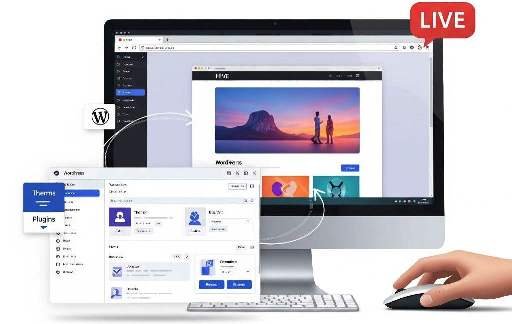
9. Tips for Beginners
- Keep your WordPress, themes, and plugins updated.
- Use a lightweight theme for better speed.
- Install only necessary plugins.
- Regularly back up your site.
- Use SEO plugins for better rankings.
10. Conclusion
WordPress is the most powerful and user-friendly platform for creating websites without any technical knowledge. Whether you are starting a blog, an online store, or a professional website, WordPress gives you everything you need.
With its huge community, flexibility, and ease of use, WordPress remains the best choice for beginners and professionals alike.
Recent Post
| Related Posts | Link |
|---|---|
| What Is Web Hosting and How Does It Work? | Click Here |
| What Is a Website? (Beginners’ Guide) | Click Here |
| Best Platforms for Website Design in 2025 | Click Here |

